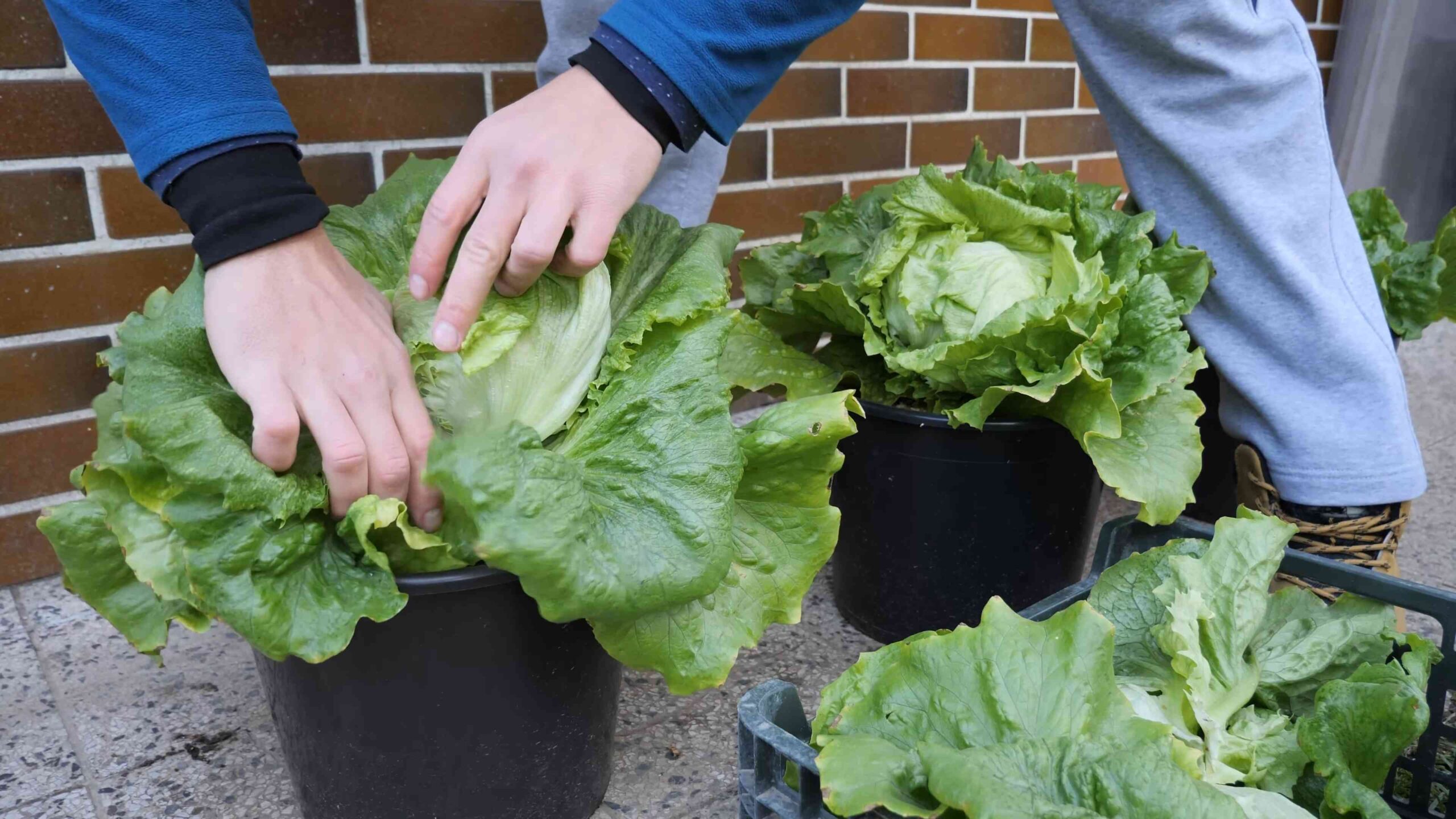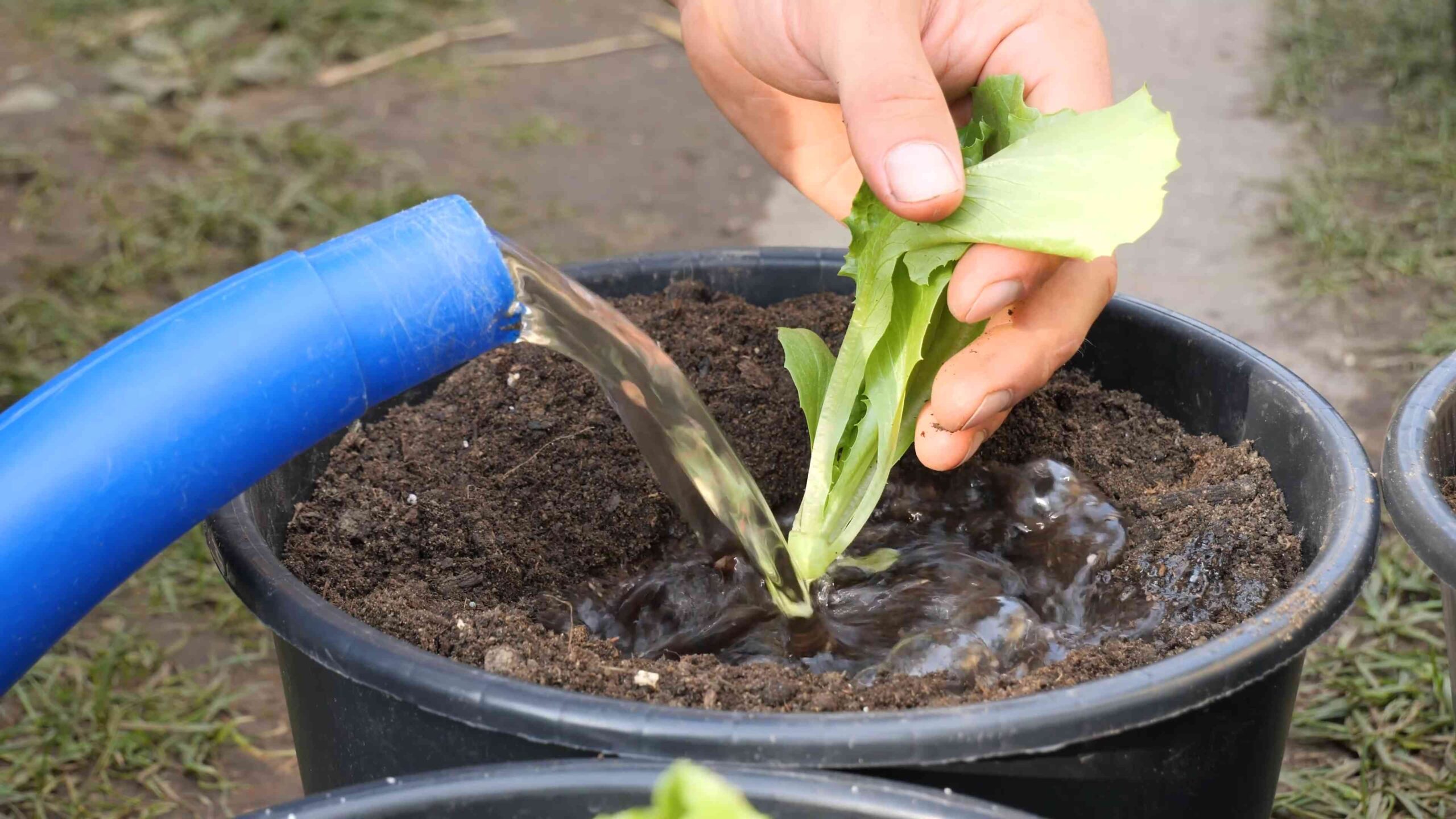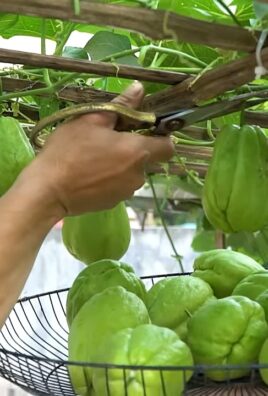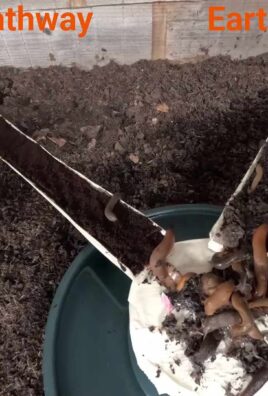Grow Iceberg Lettuce Containers: Imagine biting into a crisp, refreshing head of iceberg lettuce, grown right on your patio! Sounds idyllic, doesn’t it? For years, I thought growing my own lettuce was only for those with sprawling gardens. But I’ve discovered the joy and ease of cultivating this cool-weather favorite in containers, and I’m excited to share my secrets with you.
Lettuce, a staple in salads and sandwiches, has a rich history dating back to ancient Egypt, where it was initially cultivated for its seeds and oil. Over time, it evolved into the leafy green we know and love. While traditionally grown in garden beds, modern living often means limited space. That’s where container gardening comes in!
Why should you learn to grow iceberg lettuce containers? Well, for starters, it’s incredibly convenient. You can control the soil quality, protect your plants from pests, and even move them around to optimize sunlight exposure. Plus, there’s nothing quite like the satisfaction of harvesting your own fresh, organic lettuce. In this article, I’ll walk you through everything you need to know, from choosing the right container and soil to watering and harvesting. Get ready to enjoy delicious, homegrown iceberg lettuce all season long!

Growing Iceberg Lettuce in Containers: A DIY Guide
Hey there, fellow gardening enthusiasts! I’m so excited to share my experience with growing iceberg lettuce in containers. It’s surprisingly easy, even if you don’t have a huge garden. Fresh, crisp lettuce right outside your door? Yes, please! Let’s dive into how you can do it too.
Choosing the Right Container and Soil
Before we get our hands dirty, let’s talk about the essentials: the container and the soil. These are crucial for healthy lettuce growth.
* Container Size: Iceberg lettuce needs room to grow its head. I recommend a container that’s at least 12 inches in diameter and 12 inches deep. This gives the roots enough space to spread out. You can use a single large container for multiple plants, spacing them about 8-10 inches apart.
* Drainage: This is non-negotiable! Make sure your container has drainage holes. Lettuce hates sitting in soggy soil, which can lead to root rot.
* Material: Plastic, terracotta, or even repurposed containers work well. Just ensure they’re clean and free of any harmful chemicals. I’ve had success with both plastic and terracotta pots.
* Soil: Forget garden soil for containers. It compacts too easily. You need a well-draining potting mix. I prefer a mix that includes compost, peat moss (or coconut coir as a sustainable alternative), and perlite or vermiculite. This combination provides nutrients, retains moisture, and ensures good drainage.
Planting Your Lettuce
Now for the fun part! You can start iceberg lettuce from seeds or buy seedlings from a nursery. I’ve done both, and both work well. Starting from seeds gives you more control, but seedlings are quicker.
* Starting from Seeds:
* Timing: Start seeds indoors about 4-6 weeks before the last expected frost. Lettuce prefers cooler temperatures, so avoid starting them during the hottest months.
* Seed Starting Mix: Use a seed starting mix, which is finer and easier for delicate seedlings to grow in.
* Planting Depth: Sow seeds about ¼ inch deep.
* Watering: Keep the soil consistently moist but not soggy. A spray bottle works well for this.
* Light: Provide plenty of light. A sunny windowsill or grow lights are ideal.
* Hardening Off: Before transplanting seedlings outdoors, gradually acclimate them to outdoor conditions over a week or so. This process is called “hardening off.” Place them outside for a few hours each day, increasing the time each day.
* Planting Seedlings:
* Gently remove the seedlings from their containers, being careful not to damage the roots.
* Dig a hole in your container large enough to accommodate the root ball.
* Place the seedling in the hole and gently backfill with soil.
* Water thoroughly after planting.
Step-by-Step Planting Guide:
1. Fill your container with your chosen potting mix, leaving about an inch of space at the top.
2. If starting from seeds, sow them according to the instructions above. If using seedlings, proceed to step 3.
3. Gently remove the seedlings from their containers.
4. Dig a hole in the potting mix for each seedling, spacing them about 8-10 inches apart.
5. Place the seedlings in the holes and gently backfill with soil.
6. Water thoroughly after planting.
7. Add a layer of mulch around the base of the plants to help retain moisture and suppress weeds. I like to use straw or shredded leaves.
Caring for Your Iceberg Lettuce
Consistent care is key to growing healthy, delicious iceberg lettuce.
* Watering: Lettuce needs consistent moisture, especially in containers, which tend to dry out faster than garden beds. Water deeply whenever the top inch of soil feels dry to the touch. Avoid overhead watering, which can lead to fungal diseases. Instead, water at the base of the plant.
* Sunlight: Iceberg lettuce needs at least 6 hours of sunlight per day. However, in hot climates, it benefits from some afternoon shade to prevent bolting (going to seed).
* Fertilizing: Lettuce is a relatively light feeder. I like to use a balanced liquid fertilizer diluted to half strength every 2-3 weeks. You can also incorporate slow-release fertilizer granules into the potting mix at planting time.
* Pest Control: Keep an eye out for common lettuce pests like aphids, slugs, and snails.
* Aphids: A strong spray of water can often dislodge aphids. You can also use insecticidal soap.
* Slugs and Snails: Handpicking them off the plants at night is effective. You can also use slug bait or create barriers with copper tape.
* Weed Control: Keep the container free of weeds, which can compete with the lettuce for nutrients and water. Hand-pulling weeds is usually sufficient.
Harvesting Your Lettuce
The moment we’ve all been waiting for! Harvesting your homegrown iceberg lettuce.
* Timing: Iceberg lettuce is typically ready to harvest about 70-80 days after planting from seed, or sooner if you started with seedlings. The head should be firm and well-formed.
* Method: Use a sharp knife to cut the head of lettuce at the base of the plant. Leave about an inch of the stem in the container, as some varieties may produce smaller side shoots.
* Storage: Store harvested lettuce in the refrigerator in a plastic bag or container. It will stay fresh for about a week.
Step-by-Step Harvesting Guide:
1. Check the lettuce head for firmness and size. It should be well-formed and feel solid to the touch.
2. Use a sharp knife to cut the head of lettuce at the base of the plant.
3. Remove any outer leaves that are damaged or wilted.
4. Wash the lettuce thoroughly under cold water.
5. Dry the lettuce with a salad spinner or paper towels.
6. Store the lettuce in a plastic bag or container in the refrigerator.
Troubleshooting
Even with the best care, you might encounter some challenges. Here are a few common problems and how to address them:
* Bolting: This happens when lettuce is exposed to high temperatures or long days. The plant starts to produce a flower stalk, and the leaves become bitter. To prevent bolting, provide afternoon shade in hot climates and choose bolt-resistant varieties.
* Yellowing Leaves: This can be caused by overwatering, underwatering, nutrient deficiencies, or pests. Check the soil moisture, fertilize if necessary, and inspect the plants for pests.
* Root Rot: This is caused by soggy soil. Ensure your container has good drainage and avoid overwatering.
* Pests: As mentioned earlier, keep an eye out for aphids, slugs, and snails.
Extending Your Harvest
Want to enjoy fresh lettuce for longer? Here are a few tips:
* Succession Planting: Plant new lettuce seeds or seedlings every 2-3 weeks to ensure a continuous harvest.
* Choose Heat-Tolerant Varieties: Some iceberg lettuce varieties are more resistant to bolting than others. Look for varieties specifically bred for warmer climates.
* Provide Shade: In hot weather, provide afternoon shade to prevent bolting. You can use shade cloth or move the containers to a shadier location.
Choosing the Right Iceberg Lettuce Variety
While “Iceberg” is the common name, there are actually a few different varieties you can choose from. Here are a couple I’ve had success with:
* ‘Great Lakes’: This is a classic iceberg variety known for its large, crisp heads and good heat tolerance.
* ‘Ithaca’: Another popular choice, ‘Ithaca’ is known for its disease resistance and good flavor.
Extra Tips for Success
Here are a few extra tips I’ve learned along the way:
* Rotate Your Crops: If you’re using the same containers year after year, rotate your crops to prevent soilborne diseases.
* Amend Your Soil: Before planting each season, amend your potting mix with fresh compost to replenish nutrients.
* Observe Your Plants: Pay attention to your lettuce plants and learn to recognize the signs of stress or disease. The sooner you catch a problem, the easier it will be to fix.
* Don’t Be Afraid to Experiment: Gardening is all about learning and experimenting. Try different varieties, fertilizers, and watering techniques to see what works best for you.
Growing iceberg lettuce in containers is a rewarding experience. With a little care and attention, you can enjoy fresh, crisp lettuce right outside your door. Happy gardening

Conclusion
So, there you have it! Growing iceberg lettuce in containers isn’t just a gardening trend; it’s a practical, rewarding, and surprisingly simple way to enjoy fresh, crisp lettuce right at your fingertips. We’ve walked you through the entire process, from selecting the right container and soil to nurturing your seedlings and harvesting your bounty. But why is this DIY trick a must-try?
Firstly, it offers unparalleled convenience. No more trekking to the grocery store for wilted, overpriced lettuce. Imagine stepping outside your door and snipping off exactly what you need for a salad, sandwich, or wrap. The freshness is unmatched, and the satisfaction of growing your own food is immeasurable.
Secondly, container gardening allows you to control the growing environment. You can protect your iceberg lettuce from pests, diseases, and harsh weather conditions, ensuring a healthier and more abundant harvest. This is particularly beneficial if you live in an area with poor soil or limited space.
Thirdly, it’s incredibly versatile. While we’ve focused on iceberg lettuce, the same principles can be applied to other leafy greens like romaine, butter lettuce, or even spinach. Experiment with different varieties and create your own custom salad mix. You can also add companion plants like marigolds or basil to deter pests and enhance the flavor of your lettuce.
Variations and Suggestions:
* Vertical Gardening: If you’re truly short on space, consider a vertical planter. This allows you to grow multiple heads of iceberg lettuce in a small footprint.
* Succession Planting: Plant new seeds every few weeks to ensure a continuous supply of lettuce throughout the growing season.
* Fertilizer Options: While we recommended a balanced liquid fertilizer, you can also use organic options like compost tea or worm castings.
* Sunlight Adjustment: If you live in a particularly hot climate, provide some afternoon shade to prevent your lettuce from bolting (going to seed).
* Container Size: While a 12-inch container is a good starting point, larger containers will allow for better root development and potentially larger heads of lettuce.
* Hydroponics: For a more advanced approach, consider growing your iceberg lettuce hydroponically in containers. This method can result in faster growth and higher yields.
We truly believe that anyone can successfully grow iceberg lettuce in containers, regardless of their gardening experience. It’s a fun, educational, and delicious way to connect with nature and enjoy the fruits (or rather, vegetables) of your labor.
So, what are you waiting for? Grab a container, some soil, and a packet of iceberg lettuce seeds, and get started today! We’re confident that you’ll be amazed by the results.
And most importantly, we want to hear about your experience! Share your photos, tips, and challenges in the comments below. Let’s create a community of container gardening enthusiasts and learn from each other. Happy gardening! Let us know how your **iceberg lettuce** grows!
Frequently Asked Questions (FAQ)
What is the best time of year to plant iceberg lettuce in containers?
The best time to plant iceberg lettuce depends on your climate. In general, iceberg lettuce prefers cooler temperatures. For spring crops, start seeds indoors 6-8 weeks before the last expected frost. You can transplant them outdoors once the soil has warmed up slightly. For fall crops, start seeds in mid-summer, about 6-8 weeks before the first expected frost. In warmer climates, you can grow iceberg lettuce throughout the winter.
How much sunlight does iceberg lettuce need when grown in containers?
Iceberg lettuce needs at least 6 hours of sunlight per day. However, in hotter climates, providing some afternoon shade can prevent bolting (going to seed prematurely). A location that receives morning sun and afternoon shade is ideal. If you’re growing indoors, use grow lights to supplement natural sunlight.
What type of soil is best for growing iceberg lettuce in containers?
Use a well-draining potting mix that is rich in organic matter. Avoid using garden soil, as it can be too heavy and compacted for container gardening. A mix of peat moss, perlite, and vermiculite is a good option. You can also add compost to improve drainage and fertility.
How often should I water my iceberg lettuce plants in containers?
Water your iceberg lettuce plants regularly, keeping the soil consistently moist but not waterlogged. Check the soil moisture level daily, especially during hot weather. Water deeply when the top inch of soil feels dry. Avoid overhead watering, as this can lead to fungal diseases.
How often should I fertilize my iceberg lettuce plants in containers?
Fertilize your iceberg lettuce plants every 2-3 weeks with a balanced liquid fertilizer. Follow the instructions on the fertilizer label. You can also use organic fertilizers like compost tea or worm castings. Avoid over-fertilizing, as this can lead to leggy growth and bitter-tasting lettuce.
How do I prevent pests and diseases from affecting my iceberg lettuce plants?
Inspect your plants regularly for pests and diseases. Common pests include aphids, slugs, and snails. You can control these pests with insecticidal soap, diatomaceous earth, or handpicking. To prevent diseases, ensure good air circulation, avoid overhead watering, and remove any infected leaves promptly. Consider using companion plants like marigolds to deter pests.
How do I know when my iceberg lettuce is ready to harvest?
Iceberg lettuce is ready to harvest when the head is firm and compact. The size of the head will vary depending on the variety. To harvest, cut the head at the base of the plant with a sharp knife. Leave the roots in the container, as they may produce new leaves.
What causes iceberg lettuce to bolt (go to seed)?
Bolting is triggered by hot weather and long days. When lettuce bolts, it becomes bitter and unpalatable. To prevent bolting, provide afternoon shade, water regularly, and harvest your lettuce before it gets too hot. Choose bolt-resistant varieties if you live in a warm climate.
Can I grow iceberg lettuce indoors year-round?
Yes, you can grow iceberg lettuce indoors year-round if you provide adequate light and temperature. Use grow lights to supplement natural sunlight and maintain a temperature between 60-70°F (15-21°C). Ensure good air circulation to prevent fungal diseases.
What are some other varieties of lettuce that I can grow in containers?
Besides iceberg lettuce, you can also grow other varieties of lettuce in containers, such as romaine, butter lettuce, leaf lettuce, and spinach. Each variety has its own unique flavor and texture. Experiment with different varieties to find your favorites.
Can I reuse the soil from my container after harvesting my iceberg lettuce?
Yes, you can reuse the soil, but it’s a good idea to amend it with fresh compost or other organic matter to replenish nutrients. You may also want to sterilize the soil to kill any potential pests or diseases. You can do this by baking the soil in the oven at 180°F (82°C) for 30 minutes or by solarizing it in a black plastic bag for several weeks.
How can I improve the flavor of my homegrown iceberg lettuce?
The flavor of your homegrown iceberg lettuce can be influenced by several factors, including soil quality, sunlight, and watering practices. Ensure that your soil is rich in organic matter and that your plants receive adequate sunlight. Avoid over-watering, as this can dilute the flavor. You can also add a small amount of Epsom salts to the soil to improve the flavor and nutrient uptake.





Leave a Comment